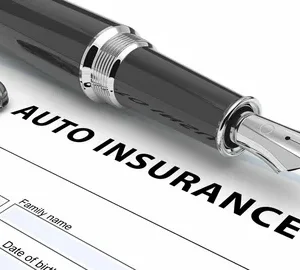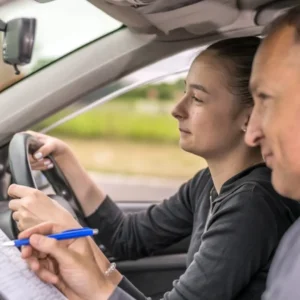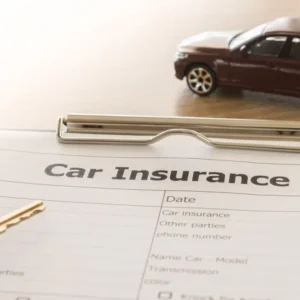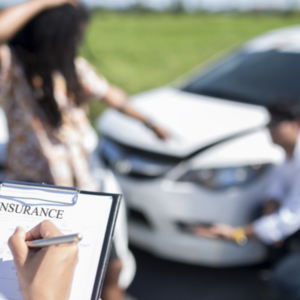What Happens If You Drive Without Auto Insurance in 2025?
Imagine cruising down the road in 2025, wind in your hair, playlist booming… until you’re pulled over only to realize you’ve been driving without auto insurance. A small slip with potentially massive consequences. Let’s unpack what that looks like today—legally, financially, and emotionally.
Why You Do Need Auto Insurance in 2025
Before diving into penalties, it’s essential to understand what qualifies as driving uninsured. In all but two U.S. states (New Hampshire and Mississippi, where you can post a bond instead), 49 states mandate that drivers carry at least minimum liability coverage. This means having active coverage and proof—either digital or physical—while on the road (wallethub.com, teamjustice.com).
Being uninsured isn’t just about skipping a monthly payment. Without coverage, you lose protection against:
- Financial liabilities—if you cause an accident, you could be personally responsible for tens of thousands (or more) in damages.
- Government penalties—fines, license suspensions, vehicle impoundment, SR‑22 requirements.
- Emotional stress—court appearances, potential jail time, and long-term financial strain.
The Legal Consequences of Driving Uninsured
Fines and Penalties by State
Fines for a first offense typically range from $100 to $1,500, and escalate sharply for repeats. Here’s a snapshot of recent updates for 2025:
| State | 1st Offense Fine | Repeat Offense | Other Penalties |
|---|---|---|---|
| Texas | $175–$350 + $250 surcharge/year for 3 yrs (francisinjury.com) | $350–$1,000 + surcharge; license/registration suspension; vehicle impoundment | SR‑22 for 2 years |
| California | $100–$200 (up to $400 with fees) | Repeat fines $200–$500; potential impoundment | SR‑22 for 3 years if accident |
| New Jersey | $300–$1,000; community service; license suspension | Increased fines; longer suspensions; continued SR‑22 | |
| Oregon | $135–$1,000; license & registration suspension; vehicle impoundment | SR‑22 for 3 years | |
| New York | $1,500 fine; 15 days jail; license revocation 1 year |
In summary, getting caught uninsured usually means a hefty fine, administrative punishment, and possibly jail time—especially after repeated violations.
License Suspension, Vehicle Impoundment & More
Fines aren’t the only game here. Consequences often include:
- License and registration suspension—you may be unable to drive or legally register a vehicle until reinstated with proof of insurance (wallethub.com, francisinjury.com).
- SR‑22 or FR‑44 filing—this is a certificate of financial responsibility, required for 2–3 years after certain violations (thezebra.com).
- Vehicle impoundment & storage fees—especially common after repeated offenses or in states like Texas or Oregon .
- Jail time—typically for repeat offenses, causing an accident while uninsured, or in states with stricter laws .
- Community service—some states offer community hours in lieu of fines (e.g., Hawaii) .
What Happens After an Accident If You’re Uninsured
The stakes get dramatically higher if you cause an accident without insurance:
- Civil Litigation
The other party can sue you directly. You’ll be personally on the hook for their vehicle repair costs, medical bills, pain & suffering—and possibly punitive damages. - No Compensation If Not At Fault
Some states have “no pay, no play” rules, meaning you can’t collect non-economic damages if you’re uninsured—even if the accident wasn’t your fault (thezebra.com). - No-Fault State Issues
In no-fault jurisdictions where each party relies on their own insurance, being uninsured means no coverage—forcing you to pay out-of-pocket for everything (thezebra.com). - SR‑22 & Premium Spike
Causing an accident uninsured will almost certainly trigger an SR‑22 requirement. As a “high-risk” driver, your premiums may spike by 20%–58% or more over several years.
The Rising Trend of Uninsured Drivers
This isn’t just theoretical—recent stats show:
- Approximately 14% of U.S. drivers were uninsured in 2022—up from 11% in 2019 .
- States hardest hit include Washington D.C., New Mexico, and Mississippi, which has no insurance requirement (wsj.com).
- The rise in uninsured drivers has contributed to higher premiums for all drivers, as insurers need to offset losses .
The 2025 Update: Higher Coverage Minimums
In some areas, new laws have raised liability requirements starting in 2025—for instance, California doubled its minimums to $30,000 per person / $60,000 per accident for bodily injury, and $15,000 for property damage . Drivers without any insurance face even stronger legal and financial repercussions under these expanded thresholds.
Steps to Avoid the Uninsured Trap
Here’s how you can avoid becoming a stat or legal liability:
- Always carry proof of insurance—either a digital/physical card, or an app.
- Never let your policy lapse—even if you own your car outright.
- Explore low-cost options—state programs or tailored liability-only plans can offer relief for tight budgets.
- Monitor premium increases—SR‑22, accident marks, or lapse history can spike rates significantly.
- Consider a no-fault bond in states like NH—if you live in New Hampshire or Mississippi, you may post a bond instead of buying insurance.
Final Thoughts & Takeaways
Driving uninsured in 2025 isn’t just risky—it’s legally and financially reckless. You’re exposing yourself to:
- Expensive fines and long suspensions
- Lawsuits that can threaten earnings or assets
- Long-term premium hikes
- A stolen vehicle
- Potential jail time in more severe cases
In reality, even the lowest legal coverage is far cheaper than dealing with the fallout. With monthly premiums around $50, sticking with liability insurance is a much smarter choice than gambling with your future on the roads.
🚗 Quick Recap
- Nearly every U.S. state requires minimum auto insurance.
- Fines range from $100 – $5,000+; license, vehicle, and registration are often suspended or revoked.
- SR‑22 filings and impoundment are frequent, especially after an accident.
- Being uninsured during a crash can lead to lawsuits, ruined credit, and financial disaster.
- Insurance theft results in premium hikes—and not just for you, but for all drivers.
- 2025 brings stiffer minimum coverage requirements in many areas.
Ready to Take Action?
- Check your current policy: Do you meet your state’s minimums?
- Compare quotes—including state-specific liability-only plans.
- Keep digital proof with you.
- Never let your coverage lapse—even temporarily.
- If you’re involved in an accident without coverage, contact an attorney immediately.
Driving is a privilege—and in 2025, that includes financial responsibility. Don’t let a simple oversight become a life-altering mistake. Protect yourself, your finances, and your future by staying insured.
References & Further Reading
- 2025 state-by-state penalties breakdown (wallethub.com, thezebra.com, icartea.com, francisinjury.com, moneygeek.com, teamjustice.com)
- Legal definitions & SR‑22 insights
- Financial aftermath of uninsured accidents (amaxinsurance.com)
- Uninsured motorist statistics (iii.org)
- California’s coverage increase as of Jan 1 2025 (the-sun.com)
Driving without auto insurance in 2025 is a high-stakes risk with no real reward. Have questions about your state’s policies or want help picking up a policy? I’m happy to help—just ask!






